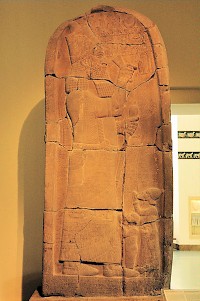Esarhaddon Fragmentary Text K
Tyre (Phoenician רצ, ṣūr, "rock"; Greek Τύρος; Latin Tyrus): port in Phoenicia and one of the main cities in the eastern Mediterranean.

In the first quarter of the seventh century BCE, king Esarhaddon (r.680-669) tightened the Assyrian grip on Phoenicia. Having secured his rear, the Assyrian king proceed to attack Egypt. At first, he failed, and he had to suppress rebellions in the north. Among the rebels was the city of Tyre, which apparently had been forced into submission when Esarhaddon went to Egypt for the second time in 671.
The victor boasted about his victories in Phoenicia in the inscription from the Nahr al-Kalb and the text from the British Museum that is known as K 2671(1) rev., which was published by Hugo Wincler in 1887.
The translation is from D.D. Luckenbill, Ancient Records of Assyria and Babylonia (1926-1927) and was included in ANET3 291.
Esarhaddon: the Siege of Tyre
[1] Ba'al, king of Tyre, living on an island amidst the sea, threw off my yoke ... of Aššur and the splendor of my lordship overwhelmed him.
[2] He bowed down and implored me, as his lord ... heavy tribute, his daughters with dowries as well as all the tributes which he had omitted to send.
[3] He kissed my feet. I took away from him those of his towns which are situated on the mainland and reorganized the region, turning it over to Assyria.